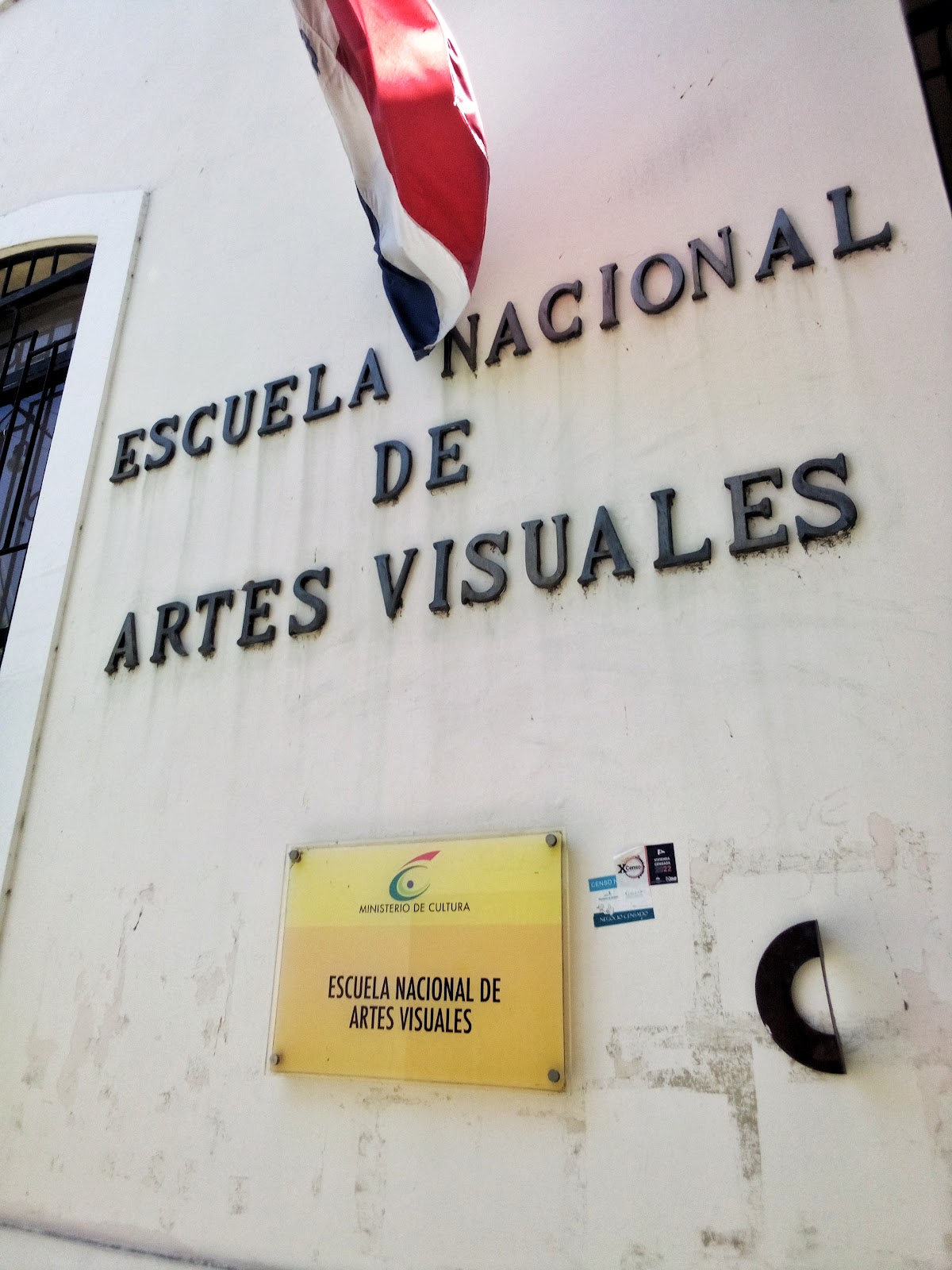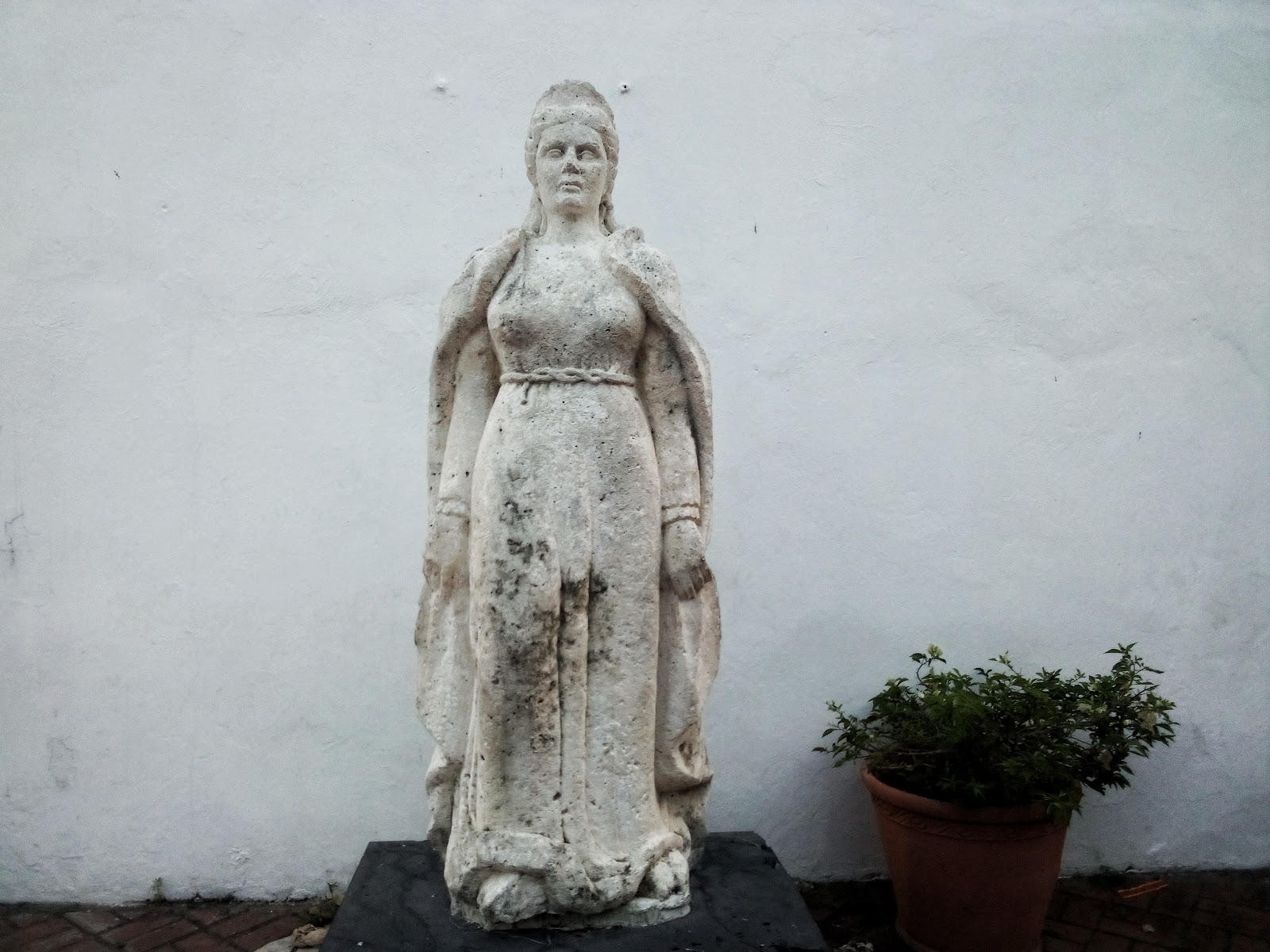Quick History Stops: Calles de Santo Domingo, Part 1

This is the penultimate post to the series on my trip to the Dominican Republic in June 2023! I spent several days in the capital, Santo Domingo, and visited many historic sites. The streets, or calles in Spanish, of Ciudad Colonial and nearby neighborhoods were filled with informative signage about churches, historic figures, and art.
Calle Mercedes
According to official signage on the side of the building, stone mason Rodrigo de Liendo constructed Iglesia Nuestra Señora de las Mercedes [Church of Our Lady of Mercies], a convent church, between 1527 and 1555. In 1653, Pedro Portillo added the first addition, while Pedro de la Rosa added a second addition in 1917. After the Trujillo Era, from 1968 to 1972, the government funded the latest restoration of the building. The sign also claims that the church has the only gothic style arcade on buildings in the Americas.



In the nearby courtyard stands a statue of Padre Pio, an Italian Capuchin monk and saint in the Catholic Church who lived from 1887 to 1968. Also on Calle Mercedes is the headquarters for Fundación Dominicana de Desarrollo [Dominican Development Foundation], created in 1966 to aid economic recovery and stability. The foundation moved to its current building on August 17, 1972. Why that specific date? “Himno Nacional Dominicano”, the national anthem of the Dominican, was sung for the first time in the building on August 17, 1883.
Calle El Conde
On the east end of Calle El Conde is Casa de la Rectoría [House of the Rectory], once the home of the nearby parish priest. According to a sign on the building, it was constructed in the 16th century set of three houses. It later became the single building at the beginning of the 20th century. This building was last renovated in 2003. After crossing Calle Las Damas, walkers come to Escuela Nacional de Artes Visuales [National School of Visual Arts] and Galeria de Arte CODAP (Colegio Dominicano de Artistas Plasticos) [Art Gallery of the Dominican School of Plastic Artists]. These spaces provide classes for local artists and host regular shows.




Farther along the street, among local shops and restaurants, are statues of Dominican heroes. A bust depicted Bartolomé Colón [Bartholomew Columbus], the younger brother of Cristóbal Colón [Christopher Columbus], who came to the Dominican in 1494 and led the first European style council government. A statue of Colonel Francisco Alberto Caamaño Deñó depicted the military leader who briefly became president of the Dominican Republic during the Civil War of 1965. His right hand was raised to salute the people. At the far west end of Calle El Conde in Plaza Patrótica Francisco del Rosário Sanchez is a bust of the plaza’s namesake. Sanchez was the second leader of the Dominican Republic after Juan Pablo Duarte and was buried at the Panteón de la Patria. The nearby Puerta del Conde [Conde Gate] marked the spot where Sanchez revealed the first Dominican flag on February 27, 1844.



Plaza María de Toledo
Located in an alley between Calle Las Damas and Calle Isabel La Católica, Plaza María de Toledo honors the wife of Diego Colón [James Columbus], son of Cristóbal Colón. Signage in the plaza (available in English and Spanish) explained that María de Toledo was the highest ranking Spanish noble in the Americas at the time of her arrival, as the king, Ferdinand II, was her cousin. She introduced high fashion to the island, defended the rights of Indiginous people, and retained her titles and property after the death of her husband.


Comments
Post a Comment
Feel free to leave a comment on what you liked best about 'Abby Epplett, Historian' and what can be improved. Remember to speak with kindness.